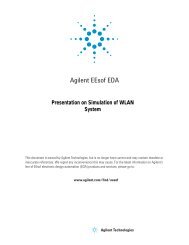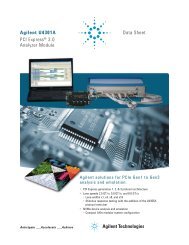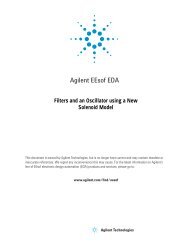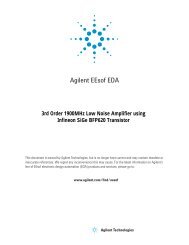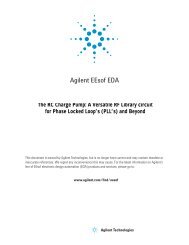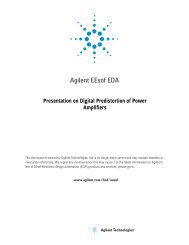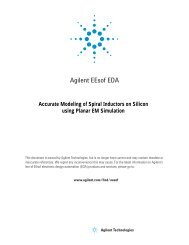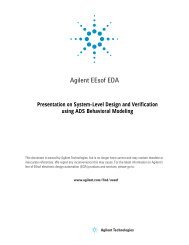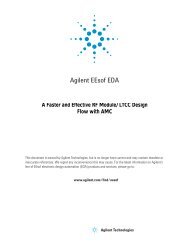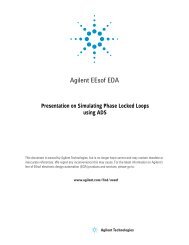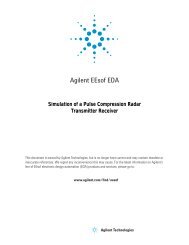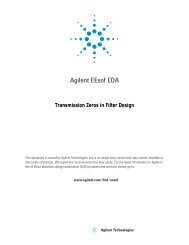Agilent 34980A Multifunction Switch/Measure Unit *34980-90005*
Agilent 34980A Multifunction Switch/Measure Unit *34980-90005*
Agilent 34980A Multifunction Switch/Measure Unit *34980-90005*
You also want an ePaper? Increase the reach of your titles
YUMPU automatically turns print PDFs into web optimized ePapers that Google loves.
3 Features and Functions<br />
Executing a Sequence<br />
After you have defined a valid sequence, you can execute it to process the<br />
specified commands. If the specified sequence name is not currently stored<br />
in memory, an error will be generated.<br />
If you attempt to trigger a sequence while one is already executing, <br />
the trigger will be placed in a queue. When the trigger queue is full, <br />
a “trigger ignored” error will be generated.<br />
To abort a sequence execution from the remote interface, use the<br />
ROUTe:SEQuence:ABORt command or a Device Clear. When the<br />
sequence is terminated, the resultant instrument state will be<br />
determined by how of the sequence had been executed when the<br />
ABORt/Device Clear was received. An ABORt command (system abort)<br />
executed from within a sequence will not terminate the sequence. The<br />
*RST and SYSTem:PRESet commands will also abort a sequence<br />
execution prior to performing their own actions.<br />
When a sequence is defined, the specified commands are checked for<br />
proper syntax and absolute parameter range limits. If an error is<br />
detected during compilation, the entire sequence will be discarded.<br />
More extensive error checking, such as channel range expansion and<br />
validation, is performed when the sequence is executed.<br />
A sequence may invoke another sequence, but may not invoke itself<br />
recursively. In addition, the number of invocations is limited to four<br />
levels of nesting and this is enforced at the time of execution.<br />
Exceeding the limit will abort the sequence and an error will <br />
be generated.<br />
You can also execute a sequence when an alarm condition is reached.<br />
See “Executing a Sequence on an Alarm Condition” on page 145 for<br />
more information.<br />
While a scan is running (see “Scanning” on page 108), the instrument<br />
prevents use of all channels in banks that contain one or more<br />
channels in the specified scan list (these channels are dedicated to <br />
the scan). Therefore, if a sequence attempts to operate a channel in a<br />
scanned bank, an error is generated and the entire sequence will <br />
be discarded.<br />
Front Panel Operation: Sequence > EXECUTE<br />
Although sequences can be defined from the remote interface only, you<br />
can execute pre- defined sequences from the front panel.<br />
Remote Interface Operation: The following command executes a sequence<br />
named “MYSEQ_1”, which closes several channels on the module in slot 1<br />
and opens a single channel on the module in slot 2.<br />
ROUT:SEQ:DEF MYSEQ_1,"ROUT:CLOS (@1001:1009);OPEN (@2001)"<br />
ROUT:SEQ:TRIG MYSEQ_1<br />
144 <strong>Agilent</strong> <strong>34980A</strong> Mainframe User’s Guide





